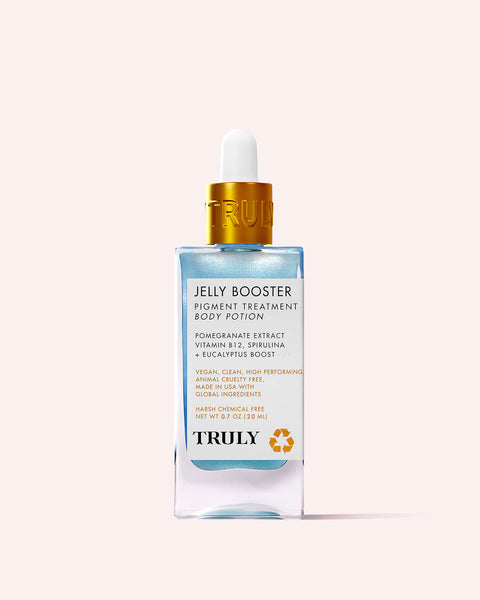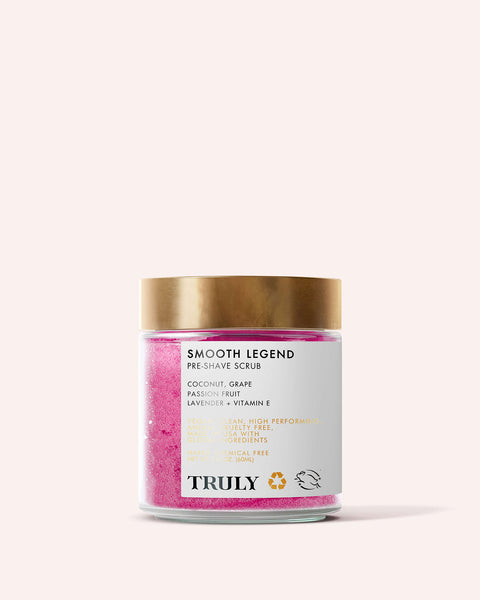Milia: *Those* Bumps on Your Face, Explained + Treated

If you've recently noticed a smattering of tiny white bumps lying beneath the surface of your skin, you're likely dealing with a skin condition known as milia. The good news is, you have absolutely nothing to worry about. Milia are purely a cosmetic issue and not life-threatening at all. On the negative side, they can make your complexion appear bumpy and uneven.
Here's everything you need to know about milia, including how and why they form, and the best ways to treat them for clear, smooth skin.
What is Milia?
Milia, or milium cysts, are small, keratin-filled cysts that form under the surface of the skin and are often mistaken for whiteheads. Nicknamed "milk spots", milia is a skin condition commonly associated with newborn babies. However, it can occur in adults, too.
While milia cysts may resemble whiteheads, they're actually not a form of acne. According to dermatologists, they're not even related to acne at all. They're simply small cysts that contain a build-up of keratin. Milia can occur anywhere in the body, but are most commonly found on the face -- since that's where most of our oil glands live.
There are two main types of milia -- primary and secondary. Primary milia are the most common type and occur due to a buildup of dead skin that was unable to shed. Secondary milia results from skin trauma, such as infection, extreme irritation, or sun damage.
Anyone can get milia. And it's pretty easy to distinguish these small milky lesions. In addition to their creamy white hue, milia are typically firm and difficult to extract.
Milia Causes
According to facialist Aleksandra Encheva, there are multiple reasons why milia may form in adults.
"Most commonly, they occur due to dead skin building up and getting trapped in the pores near the surface of the skin," explains Encheva. "If the build-up doesn’t get expelled naturally, it can become a small cyst." This is what is known as primary milia.
Secondary milia may look similar, but develops very differently. It happens when something clogs the sweat ducts -- usually skin trauma such as chemical peels, harsh skincare products, excess exfoliation, or infection.
Other types of milia include milia en plaque, a condition commonly associated with genetic or autoimmune skin disorders that affect the eyelids, ears, cheeks, or jaw. Neonatal milia affects newborns, and multiple eruptive milia, which consists of itchy area that appear on the face and arms.
How to Treat Milia
Don't Squeeze
Just like squeezing your pimples should not be done, squeezing your milia cysts should also be avoided. Squeezing, picking, or prodding at them will only irritate and cause damage to the skin. Leave the extraction to the experts, and keep your paws off!
Thoroughly Cleanse
Make sure you remove all makeup, excess oil, and impurities before going to bed in order for your pores to stay unclogged. If you've got sensitive skin, leaving makeup on when you sleep can trigger inflammation which can cause skin trauma and ultimately secondary milia. It's best to always wash your face thoroughly every night to prevent this from happening. Try our 24k Gold Black Soap Impurity Cleanser for deep and intense cleansing.

Exfoliate Once or Twice a Week
Try incorporating exfoliation into your skincare routine once or twice a week to keep skin clear and smooth. "Proper exfoliation can keep keratin and dead skin cells from becoming trapped under the surface,” says dermatologist Rachel Maiman, M.D.
Look for formulas containing exfoliating ingredients like lactic acid, glycolic acid, or salicylic acid, or ingredients that stimulate cell turnover like topical retinoids. Try our CBD Jelly Toning Solution to smooth out bumps, decongest pores, and prevent breakouts.

Avoid Oily Eye Makeup Removers
If you are experiencing milia around the eyes, swap your oily eye makeup remover for an oil-free, non-comedogenic formula. In fact, you should be generally steering clear of oily or heavy formulas that can clog the pores and contribute to milia.
Try Retinol
Retinol is a vitamin A derivative that can be helpful for both treating and preventing milia. That's because it spurs cellular turnover, enabling milia to surface. It also prevents the buildup of dead skin cells that lead to cysts. Avoid applying retinol to the eyelids.
Try our Vegan Collagen Booster Bundle for the face and body. It can be used day and night to tighten, brighten, and diminish milia.
Wear Sunscreen
To protect your skin from skin damage, always wear sunscreen with an SPF 30 or higher every day before leaving the house. Excessive sun exposure can trigger secondary milia. To prevent it in the first place, make a habit of wearing SPF every day -- and reapply it throughout the day when you're spending prolonged time in the sun.
Change Your Diet
According to the experts, adopting healthy lifestyle changes can help prevent milia. They recommend limiting your intake of cholesterol-rich foods like meat, dairy, and eggs to ward off these tiny bumps.
Get Them Professional Removed
If you're seeking a long-term treatment for your milia, your best bet is to head to your local dermatology office.
"Milia removal with a skincare professional usually requires an incision, especially when the cysts are deep below the skin’s surface," says Encheva. "Typically, it’s a quick and painless procedure. Depending on the dermatologist or aesthetician, they should be able to get rid of the milia using a comedone extractor, lancing tool or needle."
Speak to your dermatologist before getting the procedure done to check first that it's actually milia (and not another condition like epstein pearls) and that it's suitable for your skin type. Sensitive skin types may be advised against this treatment.
Milia can affect anyone. In addition to following the tips above, you may also want to consider refraining from in-office treatments like laser therapy and dermabrasion, which may play a role in milia appearing on your skin. If you have any concerns or wish to receive clarification over your skin condition, consult your dermatologist.
























































